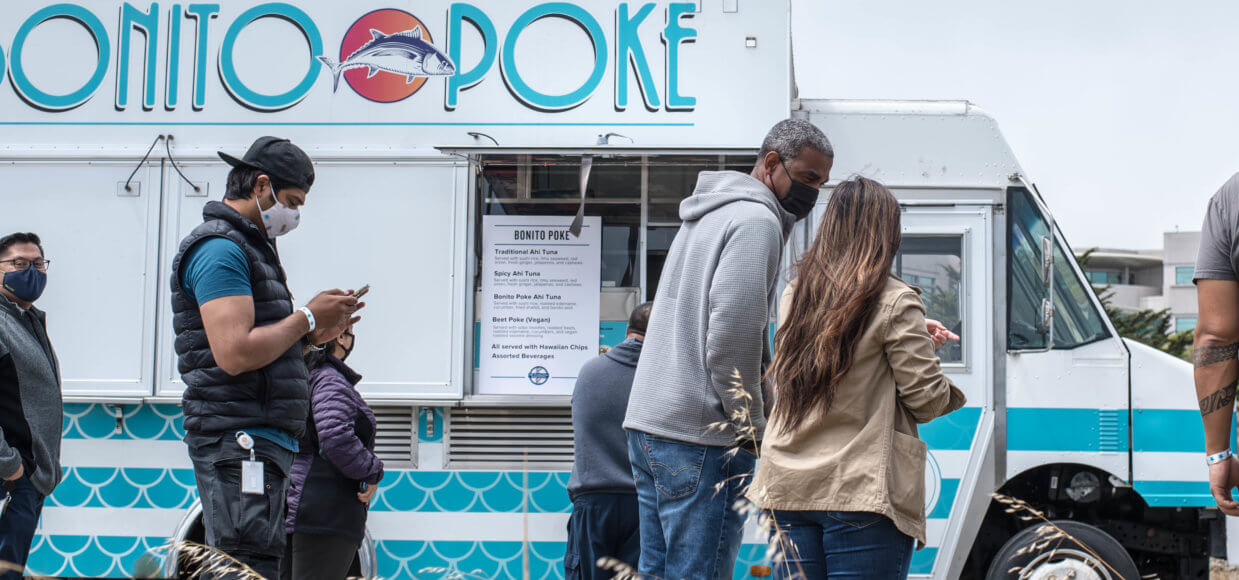
To reopen or not to reopen—that is the question on every employers mind! Many employers are grappling with decisions around when and how to bring employees back to the office in the safest and most responsible way.
We know employers can’t simply saunter back into the office, flip on the lights and expect the workplace to return to the way things were. Ensuring employee safety is paramount to reopening an office, but several other considerations will impact how smoothly your reopening will go.
Here are 15 tips for how businesses can safely reopen and welcome employees back.
#1) Assemble a Reopening Team
If you haven’t already formed a pandemic team to oversee working remotely, now is the time to create one to manage your reopening. The team can focus its attention on all the major and minor details and divvy up responsibilities.
#2) Create a Detailed Reopening Plan
Most employers have never had to close their office space for prolonged periods, so they can’t rely on past experiences or hire knowledgeable consultants to guide them with the reopening. In collaboration with your reopening team, create a detailed plan that identifies and mitigates risks, includes contingency plans in case of a COVID-19 outbreak and contains a timeline.
#3) Be Sensitive and Empathetic
Before the pandemic, typically, only a small number of employees at any given time were experiencing personal trauma and grief outside the office. The pandemic has affected all employees, and they’ve been living with uncertainty and turmoil for months. Many have lost loved ones or watched them suffer from anxiety and loneliness, especially aging parents or children isolated from their peers.
Many employees feel burned out from juggling remote work, overseeing children’s remote learning, recuperating from illness or caring for others, shopping for quarantined loved ones, and the list goes on. Demonstrate to your employees that you understand they may be suffering and don’t expect things to be the way they were before the pandemic. Actively listen and help them connect with mental health or other resources if necessary. Harvard Business School published this helpful article about how to create a new work world.
#4) Seek Employee Feedback
Before you begin any reopening activities, reach out to each employee and encourage them to be honest about their experiences. Many people have adjusted well to working from home and will be happier continuing to do so. Some have invested money into renovating their homes to create efficient working spaces. Many report being less stressed now that they no longer have to deal with commuting hassles and can spend more time with family or focusing on their health. Ask employees if they prefer to work remotely 100% of the time or work a hybrid remote/in-office schedule.
Some employees may fear returning to work because either they (or a family member) are immunocompromised and are more vulnerable to contracting COVID-19. Some are also naturally introverted and feel anxious when forced to interact in an office environment socially. Maybe they used to ride a certain bus to work that is no longer operating. Ask employees how they feel about returning to the office and what they fear most. They might say things that didn’t occur to you (and they’ll likely appreciate that you asked).
#5) Determine How Much Office Space You Need
If you have fewer employees returning to the office full-time, you may not need all your current office space. If you’re locked into a commercial lease, some landlords will allow you to renegotiate your lease for a smaller area within the building or in another building they own. You also may be able to sublease part of your space to another company.
#6) Ensure Your Space Is Physically Ready for Occupancy
If your facility has been offline for several months, your HVAC and water systems may need professional attention. Mold, rodent or pest infestations and stagnant water might have accumulated—no one wants to walk back into that! Increasing air circulation by opening windows and upgrading your HVAC system is well worth consideration since the coronavirus (and many other viruses) is airborne.
#7) Identify Hazardous Areas and Reduce Exposure Risks
Common-use areas such as break rooms, restrooms, cafeterias, waiting rooms, elevators and lobbies where employees or visitors are likely to be within 3 to 6 feet of each other increase COVID-19 transmission risks. Consider modifying these areas by spreading out seating. Add potted plants or tri-fold decorative screens in between seating areas as natural or eye-pleasing barriers.
Instead of one large break area for an entire floor or office, see if you can repurpose offices or other space to create mini-break rooms. Instead of shared condiments and bulk snacks, provide individual packets and serving sizes. Group employees into “pods” or cohorts and assign them their own break room or restroom, similar to what many schools did for students to limit potential virus exposure to fewer people. If someone in a cohort contracts the virus, only cohort members might need to quarantine or get tested instead of the entire staff.
Encourage employees to use the stairs instead of elevators. If possible, create one-way routes throughout the office and staircases (one for up and another for down). For high-use areas, you can add supplemental ventilation or freestanding electronic UV air purifiers. Place hand sanitizing stations throughout the building and ensure hand soap dispensers are frequently refilled. Have surgical masks on hand.
#8) Reconfigure the Office
Survey your office layout and look for ways to make it safe— and more appealing. We’ve grown accustomed to unattractive plexiglass shields everywhere, and while they do reduce exposure risk, they serve as unwelcome reminders of the pandemic. Spread out workstations and use potted plants or decorative screens to create natural distancing and barriers. Consider holding meetings in more open spaces or even outside instead of inside closed conference rooms.
If you have frequent customers or clients who come into the building, try to create a separate area away from employee workstations to meet with them. Ideally, the visitor area will have a separate restroom and entrance. Instead of ushering clients into employee offices for meetings, designate conference rooms or empty offices as meeting spaces when privacy is necessary. Place freestanding UV electronic air purifiers inside these rooms for added protection.
Let employees see you are willing to try new things to ensure their safety and comfort and ask for their input.
#9) Ditch the Cafeteria for Food Trucks
Reopening a cafeteria safely requires a more complex approach since cafeteria workers must work closely together, and the space practically begs employees to intermingle. You can still use the cafeteria for dining, but instead of reopening the kitchen, book a rotating schedule of food trucks to provide morning coffee and bagels, daily lunch or afternoon smoothies. Either you can foot the bill, or employees can order and pay online with many food trucks. Rearrange or replace cafeteria tables to create smaller, appealing eating areas. Wherever possible, create comfy outdoor dining areas by installing outdoor space heaters, fans, awnings or umbrellas.
#10) Create Blocks of In-Office Time
If employees will be working remotely part of the time, ensure their in-office time is productive. Instead of employees randomly showing up in the office, create a schedule of when people can expect to find others there and encourage employees to follow it. It’s also essential for teams who need to collaborate to have some informal time to socialize and exchange ideas. Encourage teams to schedule occasional late afternoon coffee breaks, communal walks or casual, non-working lunches.
#11) Bring People Back Slowly
Follow the lead of restaurateurs when they open a new restaurant—they don’t throw the doors wide and invite the whole world in the first week or two. Consider which teams or departments should come back first. A staggered return will give you time to work out any kinks and seek employee feedback on what they like about the new changes—and what they don’t. You can tweak the things that aren’t working before the entire office staff returns.
#12) Create Staggered Hours for On-site Workers
For custodial and maintenance workers and others who cannot work remotely, ask them if they would prefer staggered hours or split shifts to reduce the number of people in the building at a time. If you’ve scheduled blocks of time for remote workers to come in or regular meetings when there are more people in the building, allow non-remote workers to avoid working during those times when possible. You can also stagger break times to reduce exposure risks.
#13) Have a Clearly Defined Isolation Protocol
An important responsibility for your reopening team is to devise a plan in case an employee falls ill while in the office or others see an employee exhibiting COVID-19 symptoms. Appoint an isolation coordinator(s) who can step in immediately and take control. The coordinator (wearing PPE) can give the ill individual a mask and escort them directly to a designated isolation room. The coordinator can work with the local health department regarding COVID-19 testing and quarantining for the sick person and anyone who came in close, prolonged contact. Any areas where the sick person spent time need to be deep cleaned and sanitized immediately, so make sure there is a plan.
#14) Plan Some Fun Welcome Back Activities
While following all the safety protocols is necessary for employee safety, the required social distancing, isolation, mask-wearing and hand sanitizing have made us all a little weary. Now more than ever, it’s important for employees to have opportunities to reconnect and re-establish bonds. Here are a few ideas for how to welcome employees back:
Book a Lunch or Happy Hour: Many communities are open for outdoor dining, so consider taking small groups or teams out for a welcome back lunch or an after-work happy hour. Or better yet, book a food or beverage truck to park outside the office or in a nearby park.
Distribute Gift Cards and Personalized Cards: Gift cards to local coffee or sandwich shops make employees feel appreciated—and helps local restaurants get back on their feet. Write a personalized welcome back message or thank individuals for hanging in there during the turmoil.
Hand Out UV Phone Sanitizers: Phones tend to be the germiest things we own, so giving each employee a UV phone sanitizer as a welcome back gift is not only a nice gesture, but it may also reduce illness in the workplace. Some include wireless charging capabilities. You can buy them in bulk for around $10 – $15 each.
Give Mini Electric Massagers: You’ll find a variety of little handheld battery-operated massagers on the market, perfect for keeping in a desk drawer and pulling out for a quick self-massage. You can buy them on Amazon or in bulk for about $5 – $10 each or go for an upgraded massage gun for $15 – $50 (buy-in-bulk pricing).
Give Consumable Gifts: Instead of yet another coffee mug or water bottle that will collect dust, consumable gifts tend to get used. Give gift packs such as gourmet coffee, delicious chocolates, herbal teas, cocktail kits, wine or unique pasta and sauce kits. Just keep in mind dietary preferences such as gluten-free, food allergies or alcohol avoidance.
Schedule a Team Building Event: Many employees groan when they hear “team building event,” so think thoughtfully about what might appeal to most. Come up with some ideas and let employees vote—or offer more than one option so employees can choose the one they like best (or hate the least!). Here’s a list of ideas (some aren’t COVID-suitable).
Organize a Friendly Competition: There’s nothing like a little friendly competition to increase morale and provide some teamwork opportunities. Check out these ideas from CultureAmp.com, Teambuilding.com and Bizfluent.com (not all ideas are COVID-friendly).
#15) Communicate, Encourage Input and Be Flexible
It’s not enough to simply adhere to the Centers for Disease Control and Prevention guidelines for safely reopening—most of those focus on physical aspects such as sanitizing, physical distancing, what to do in case of COVID-19 exposure, etc. Your employees need to feel that you and the management team take their physical and mental health and safety seriously. Let them know about the safety procedures, expanded cleaning services and upgrades you’ve put in place. Thank them often for their service and publicly or privately recognize them when they go above and beyond.
Communication is a two-way street, so the saying goes, so aim to have formal and informal communication channels so employees can comfortably ask questions, provide feedback or voice concerns.
Be flexible and adaptable if a new protocol is falling flat and needs reworking or elimination. When an employee needs additional time away to care for a sick loved one, encounters childcare or public transportation problems or must quarantine, work with them to find solutions.
Like our ideas? With 10 years of experience serving corporate clients and continuous operation throughout the pandemic, Off the Grid is here to help you feed your employees safely. Our catering offerings start at $3,500 for 100 people served.
Additional Resources
Check out these additional resources for more detailed information about how to reopen safely:
CDC.gov COVID-19 Employer Information for Office Buildings
Occupational Safety and Health Administration (OSHA) Guidance on Returning to Work
American Industrial Hygiene Association (AIHA) Reopening Guidance for General Office Settings
Workplace Safety & Prevention Services Checklist (a Canadian publication but offers a thorough plan)
If you’re wondering what’s happening in the meeting and convention space industry, visit Meeting Planner International’s Coronavirus Resource Section.
To learn about which hotels and conference centers are reopening, check out this directory from TravelerPromos.com.
Byline: Lee Ridley





